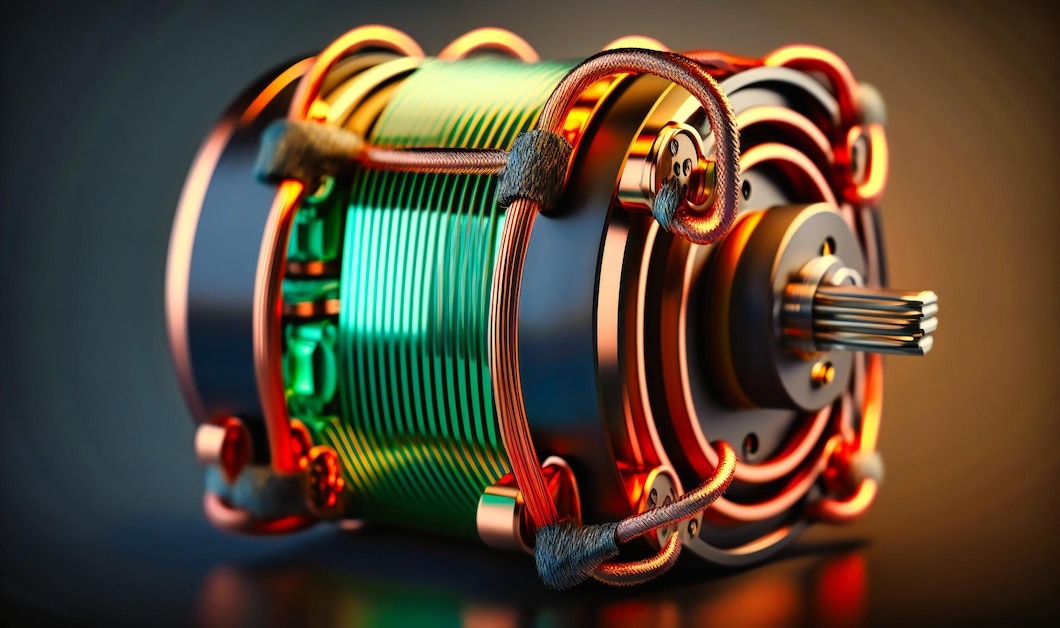Have you ever wondered how machines move with such exactness and control? The answer lies in electric rotary actuators, a critical component in modern engineering. These unsung heroes are crucial in making everything from cars to industrial robots operate precisely.
In this article, we’ll explore electric rotary actuators, understand how they work, and examine their significant role in today’s machines.
Applications in Modern Machines
When you need a machine to perform a specific rotary motion, electric rotary actuators come to life. It starts turning, and the gearing system translates this rotation into precise circular movement. The feedback system continuously monitors the actuator’s position, ensuring it moves exactly as required.
Below are some examples of how these efficient machines work in everyday life and modern machinery.
1. Automotive
- Power Windows: Electric rotary actuators enable the smooth and precise movement of vehicle power windows. This allows convenience and control to drivers and passengers.
- Side Mirrors: These actuators are key in adjusting side mirrors. This lets drivers optimize their view and maintain road safety.
- Seat Adjustments: In many modern cars, they power the adjustments of seats, ensuring that drivers and passengers can find the most comfortable and ergonomic positions.
- Convertible Roofs: For convertible vehicles, electric rotary actuators are responsible for seamlessly opening and closing the roof, providing an enjoyable driving experience regardless of the weather.
2. Aerospace
- Landing Gear: In aircraft, precision and reliability are paramount. They are used in the deployment and retraction of landing gear, contributing to safe takeoffs and landings.
- Wing Flaps: These actuators play a critical role in adjusting wing flaps. This allows pilots to optimize the aircraft’s aerodynamics during different phases of flight.
- Rudder Control: Electric rotary actuators are employed in the precise control of rudder movements, which are essential for steering and stability.
3. Manufacturing
- Industrial Robots: In the manufacturing sector, electric rotary actuators are indispensable in industrial robots. They ensure that robots move with precision and accuracy. This makes them suitable for tasks such as welding, assembly, and material handling.
- CNC Machines: Computer Numerical Control (CNC) machines rely on electric rotary actuators to control tool movements. These actuators enable the high-precision machining of various materials, contributing to the production of intricate components and products.
4. Renewable Energy
- Solar Panels: Electric rotary actuators are used in solar tracking systems to position solar panels for optimal sun exposure. By adjusting the orientation of the panels to follow the sun’s path, these actuators maximize the efficiency of energy generation in solar farms and installations.
- Wind Turbines: Electric rotary actuators are essential in controlling the pitch angle of wind turbine blades. By adjusting the angle of the blades, these actuators optimize the capture of wind energy, contributing to the efficient generation of electricity from wind power.
5. Agriculture
- Plow Height Adjustment: In modern farming equipment, they are responsible for adjusting the height of plows. This precise control enables farmers to tailor the plowing depth to the specific needs of their fields, promoting efficient and effective cultivation.
- Combine Harvesters: Electric rotary actuators control the movement of combine harvesters, ensuring that the harvesting process is carried out with precision. They contribute to the efficient and thorough gathering of crops, which is crucial in agriculture.
These diverse applications highlight the versatility and significance of electric rotary actuators in various industries. They are instrumental in enhancing the performance and efficiency of machines and systems, making them an indispensable component of modern engineering.
Whether it’s providing comfort and functionality in vehicles or enabling precision and control in manufacturing and renewable energy, electric rotary actuators continue to drive innovation and progress in numerous sectors.
Advantages of Electric Rotary Actuators

Electric rotary actuators offer several advantages. They are as follows:
- Precision: These actuators can perform movements with remarkable accuracy, making them essential in applications like robotics and manufacturing.
- Energy efficiency: They consume power only when in motion, leading to energy savings in various industries.
- Quiet operation: Unlike other actuators, these actuators operate quietly, making them suitable for noise-sensitive environments.
- Safety: Many have safety features to prevent damage or injury in case of obstructions or overloads.
Challenges in Using Electric Rotary Actuators
While electric rotary actuators have numerous advantages, they also face some challenges. Here are the following three challenges:
- Initial cost: The upfront can be higher than other actuators, which may deter cost-sensitive applications.
- Complex control: Ensuring precise control and synchronization in complex systems can be challenging and may require advanced control systems.
- Maintenance: Electric rotary actuators require periodic maintenance, including lubrication and system checks, to ensure their continued performance.
Be Propelled Into the Future!
Electric rotary actuators are poised to expand their influence in shaping the design and operation of the machinery that defines our daily existence as technological progress continues to unfold.
These are the silent champions of modern machinery, delivering unparalleled precision, efficiency, and control across various industries, from automotive to renewable energy.
